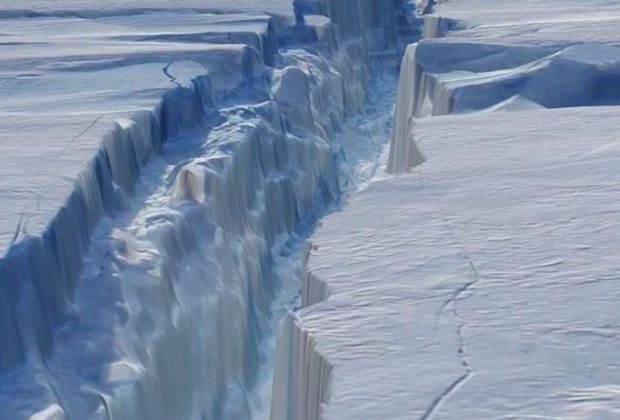A year ago, a huge 583-square kilometre (225-square mile) ball of the Pine Island Glacier – a vast segment of ice that carries the West Antarctic ice sheet together – broke free, heading out to the ocean to finally melt down and increase sea levels around the globe.
Now, new evidence from satellite images indicates this break was the result of a rupture in the ledge 32 kilometres (20 miles) inland, suggesting the glacier is in fact breaking apart in the interior, rather than the periphery, as scientists had long imagined. And even worse – a second rift that is inland has become apparently forming.
This suggests that something weakened the middle of the ice shelf, using the most likely explanation being a crevasse melted down out in the bedrock level by way of a warming ocean.
This theory is backed up from the reality that the team of Howat discovered the rift opened up inside among the sheet’s valleys.
These valleys, which are dips where sea level lies not lower than parts of the ice sheet, let warm water to reach farther inland underneath it, causing indentations as ice melts below to form on the surface.
The really troubling thing is there are several valleys farther up-glacier,” Howat said. If they’re really sites of weakness which can be prone to rifting, we could possibly find more gifted ice decline in Antarctica.
It’s possible for you to view another of the inland rifts in the picture on top of the webpage. This new rift has formed within recent months in the middle of the Pine Island Glacier, suggesting a tendency that was worrisome.
Research workers at the moment are faced with analyzing how global sea levels can impact us if you know that about half the world’s people resides near a shoreline later on, which can be critical.
This type of rifting behavior provides another mechanism for accelerated retreat of the glaciers, adding to the likelihood that people might find major fall of West Antarctica in our lives.
Just how does a rift be formed by an ice shelf ?
Well, it’s fairly easy: warm ocean water seeps right into a crevasse in the ice shelf, heating it up from beneath.
The team managed to come for their decisions thanks to data gathered by the Landsat 8 satellite – a combined project between NASA and also the US Geological Survey, started in 2013 to track changes.
The team’s discovery is a must to our comprehension of the means by which the world’s as our planet gets warmer and warmer, ice sheets are melting down.
As stated by the team, about half the world’s fresh water is locked in the Pine Island Glacier and Antarctica.



